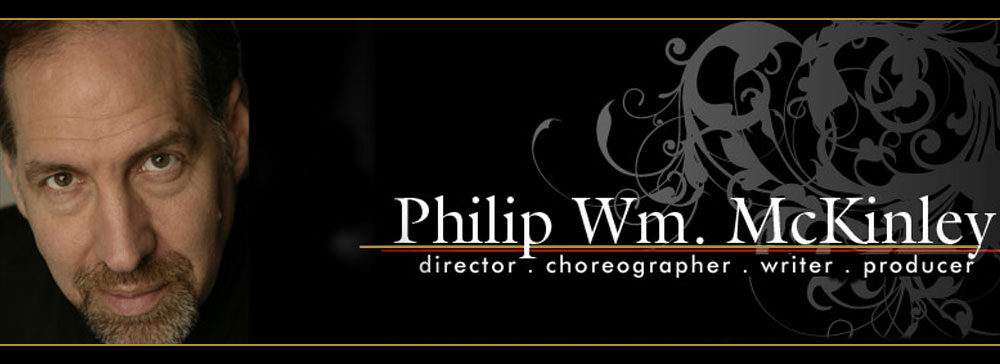Broadway’s Spider-Man and the Circus
Have a Common Link, Director Phil Wm. McKinley
The road to Broadway for the musical Spider-Man Turn off the Dark, has been one fraught with disasters, delays and creative disagreements. And they all made headlines. The show got so much publicity detailing its many woes and the mounting number of preview performances that people bought tickets hoping to be there when another crash landing of the title character occurred. Eventually even the critics would not stay away. They came and published reviews based on a still evolving creative process.
But the technical problems were, in fact, the least of the show’s problems. The producers and composers (Bono and The Edge) teamed up against the show’s director and principal writer Julie Taymor, who had guided Disney’s The Lion King into the Broadway history books. So her reputation and therefore her judgment were thought by some (not the producers and composers apparently) to be unassailable.
Eventually Taymor was fired. The lawsuits engendered by that move will be working their way through the courts for some time to come. In the meantime the producers needed to replace Taymor with a new director. One of the names being bandied about for the job was that of Phil Wm. McKinley, whom circus fans will recognize as the creative forced behind numerous versions of the Greatest Show on Earth. Whoever the new director was to be he would have just three week to install any changes during which time the show took a hiatus from its public performances.
Did his circus experience influence his eventually being hired? Absolutely, McKinley believes. “I looked up and knew what the equipment was and the complications it involved.” But there would be more to the overhaul than merely dealing with the technical aspects of the show. (Check out the review in the Passing Spectacle and count the number of people involved merely in the flying which is so central to the show.) The script needed to be completely revamped. McKinley began rehearsing the cast a week before the hiatus, but what with the performance schedule and union rules he could only get in about twelve hours during that first week.
When the show shut down he spent a full week with the cast in a studio and then a week and a half in technical rehearsals, the latter being especially stressful given all the technical things, like the flying, the mechanics of the scenery and the lights that had to be coordinated.
McKinley came into that first week of rehearsals with a completely re-written script. The writers, Glen Berger and Roberto Aguirre-Sacasa, he says were terrific about the amount of work they accomplished in so short a time.
In the original script the character Arachne, a spider-goddess of sorts, was the central character and Peter Palmer, the spider-man, was only a supporting figure. It didn’t take the producers and writers and McKinley long to figure out that the audiences wanted the show to be Peter’s story, which Taymor had resisted. In the end, the show McKinley directed was, he estimates, about 85-90 percent different from what it had originally been under Taymor.
To give audiences the show they wanted was a challenge for the crew, whom McKinley regards with awe. “They were phenomenal,” he says. “They put in a lot of over time. The unions knew the producers were working to save the show and honored that. I was denied eligibility for the Tony, but for me the real reward was saving 148 jobs.”
The script changes included an entirely new second act and three new musical numbers. Ninety-percent of the staging there is the work of McKinley. The Green Goblin who becomes one of the most amusing characters in the show had formerly been killed off in the first act. Now he was tearing the place apart.
McKinley also added an additional five flights to those already in place when he took over. Some of those early flights were done by nothing more than wooden cutouts. “I wanted them all to be done by humans.” To make that happen in so short a time McKinley gives special credit to Jason Shupe who programmed the flying. He accomplished in a couple of hours what others thought it would take days.
The happy ending is that the show is now a commercial and perhaps grudging critical success. It has brought to Broadway an audience that is younger than the typical demographic by about thirty years. There are young, hip twenties and thirties-somethings and kids at every performance.
As was his habit with Ringling McKinley continues to visit the show periodically to make adjustments and oversee the casting. What once seemed like a colossal flop in the making now has the looks of turning into a long-term commitment.
